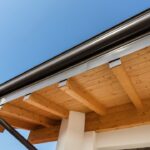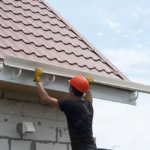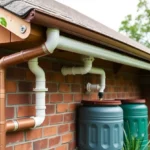Homeowners often find themselves pondering a crucial query when it comes to the longevity and protection of their homes: will insurance cover a 20-year-old roof? With changing weather patterns and the natural aging process of roofing materials, this concern is more prevalent than ever. Understanding the specifics of insurance coverage can provide peace of mind and safeguard one’s most significant investment the home.

Understanding Roofing Insurance
To fully grasp whether insurance will cover an aging roof, it’s essential to comprehend the general concept of roofing insurance. Homeowners insurance policies typically include coverage for sudden perils like fires, storms, and vandalism. However, the age and condition of your roof at the time of appraising the claim play significant roles in determining the outcome.
Types of Coverage Available
There are primarily two types of coverage Replacement Cost Coverage and Actual Cash Value Coverage. Replacement Cost Coverage ensures your roof is replaced at today’s prices, considering no depreciation has occurred. In contrast, Actual Cash Value Coverage considers depreciation, providing a payout based on the roof’s current value.
The Impact of Roof Age on Insurance
As roofs age, they naturally become more susceptible to damage. This vulnerability impacts the insurer’s willingness to cover it. A 20-year-old roof usually signifies nearing the end of its practical life. Consequently, insurance companies might be more stringent in offering full coverage.
Factors Influencing Insurance Decisions
Several factors influence whether an insurer will cover an old roof, including:
- Type of roofing material used
- Past maintenance records
- Local weather conditions
- Previous claims made on the property
Steps Homeowners Can Take
Homeowners are not entirely at the mercy of insurance companies. There are proactive steps to ensure the best chance of coverage:
Regular Roof Inspections
Conducting regular inspections allows homeowners to catch minor issues before they escalate. Documenting these inspections can serve as proof of conscientious maintenance, potentially swaying insurance decisions favorably.
Maintaining Detailed Records
Keep detailed records of all roof-related activities, including repairs and inspections. These documents can be vital in proving to your insurer that your roof is well-maintained and worthy of coverage.
Exploring Alternatives if Not Covered
In cases where insurance doesn’t cover an older roof, homeowners need not panic. Exploring different avenues can alleviate financial burdens:
Roofing Loans and Grants
Some financial institutions offer loans specifically for roofing projects. Additionally, certain government programs provide grants for necessary home repairs, potentially covering costs associated with replacing an aging roof.
Consulting Roofing Professionals
Engaging with [roofing experts](https://roof-home.com/how-to-choose-a-roof-construction-company/) can provide insights into alternative materials and strategies for prolonging the life of a roof without full replacement.

Frequently Asked Questions (FAQ)
Does the type of roofing material affect insurance coverage?
Yes, it does. Different materials have varying lifespans, which influence insurance company assessments. For example, [metal roofing](https://roof-home.com/top-5-roofing-materials-a-guide-to-choosing-the-best-option-for-your-home/) might be favored over [tpo roofing](https://roof-home.com/what-is-tpo-roofing-everything-you-need-to-know/) due to its durability.
How often should I have my roof inspected?
It’s generally advisable to have a professional inspection annually. After severe weather conditions, additional inspections can help identify potential damage early.
Can I switch insurance companies if mine won’t cover my roof?
Yes, shopping around for different insurance policies can uncover alternatives with favorable terms for covering an older roof. Consulting multiple providers is a proactive step in securing necessary coverage.
Understanding whether will insurance cover a 20-year-old roof is a substantial part of home ownership. While challenges exist, being informed about policy specifics, materials, and maintenance can significantly impact the likelihood of receiving coverage, ensuring the safety and integrity of one’s home.
This article contains affiliate links. We may earn a commission at no extra cost to you.







